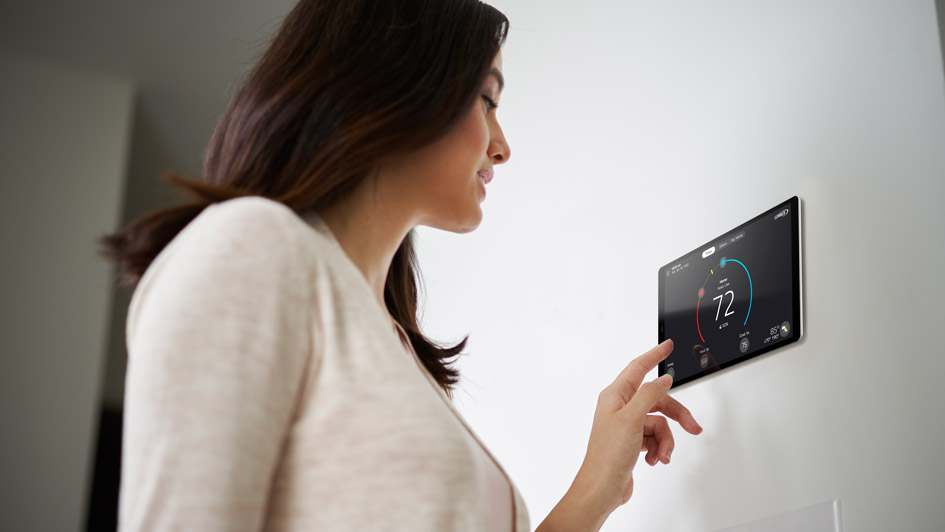
Once the weather starts to cool off, you may be thinking about how you’ll prepare your heating and cooling. After all, HVAC expenses can make up a large portion of your monthly electric bill. To learn new ways to reduce costs, some people take a closer look at their thermostat. Could there be a setting they can use to boost efficiency?
The majority of thermostats include both a ‘Fan’ or ‘Fan On’ setting. But if the fan is running during a regular cycle, what will the fan setting offer for your HVAC system? This guide should help. We’ll walk through precisely what the fan setting is and when you can use it to reduce costs during the summer or winter.
What Is the Fan Setting on My Thermostat?
For the bulk of thermostats, the fan setting signifies that the air handler’s blower fan remains on. A few furnaces will operate at a low level with this setting, but for the most part heating or cooling isn’t being produced. The ‘Auto’ setting, in contrast, will turn on the fan through a heating or cooling cycle and switch it off once the cycle is complete.
There are benefits and drawbacks to trying the fan setting on your thermostat, and whether you do or don’t {will|can|should]] depend on your unique comfort requirements.
Advantages to switching to the Fan/On setting:
- You can keep the temperature in every room more consistent by permitting the fan to keep generating airflow.
- Indoor air quality should improve because constant airflow will keep moving airborne particles through the air filter.
- A smaller number of start-stop cycles for the HVAC fan helps extend its life span. Since the air handler is often a component of the furnace, this means you could minimize the risk of needing furnace repair.
Disadvantages to using the Fan/On setting:
- A constant fan could raise your energy bills somewhat.
- Nonstop airflow could clog your air filter soon, increasing the frequency you’ll need to replace it.
{Choosing Between|Should My Thermostat Be on|Which Setting for My Thermostat? Fan or Auto in Each Season
In the summer, warm air will sometimes persist in unfinished spaces including the attic or an attached garage. If you use the fan setting, your HVAC system might draw this warm air into the rest of your home, compelling the HVAC system to work more to preserve the set temperature. In severe heat, this could result in needing AC repair more often as wear and tear gets worse.
The reverse can happen during the winter. Cooler spaces such as a basement will hold onto cooler air, which may eventually flow into the rest of your home. Leaving the fan running may draw more cold air upward, increasing the amount of heating you need to keep warm.
If you’re still trying to decide if you should switch to the fan/on setting, don’t forget that every home and family’s comfort needs are different. Leaving the HVAC system’s fan on may work for you if:
Someone in your household suffers from allergies. Allergies and similar respiratory conditions can be stressful on the family. Leaving the fan on can help to enhance indoor air quality, helping your family breathe easier.
Your home deals with hot and cold spots. Lots of homes wrestle with difficult hot and cold spots that quickly return to a temperature different from the rest of the house. The fan setting can help limit these changes by steadily refreshing each room’s supply of air.
